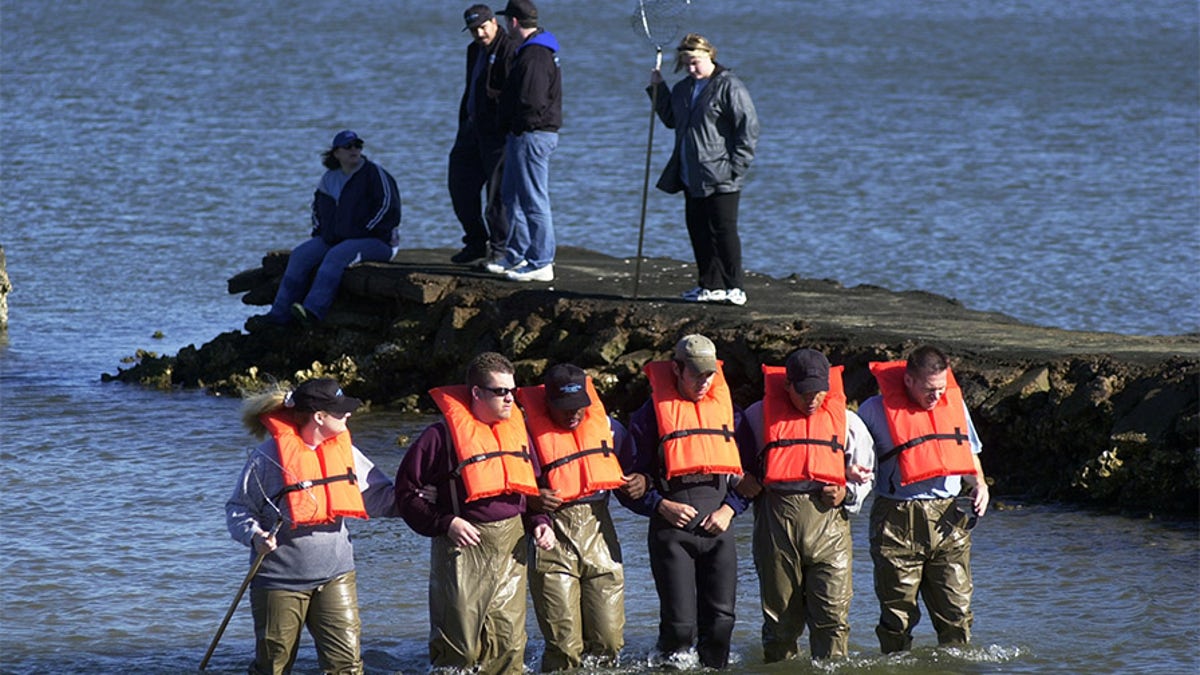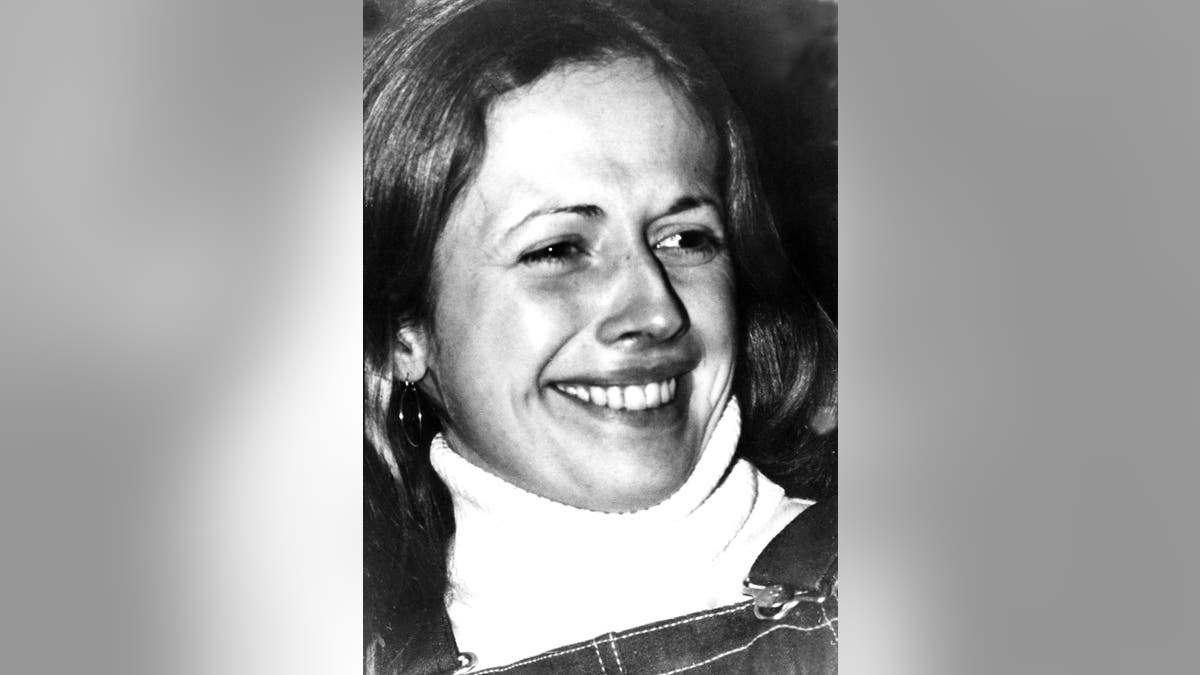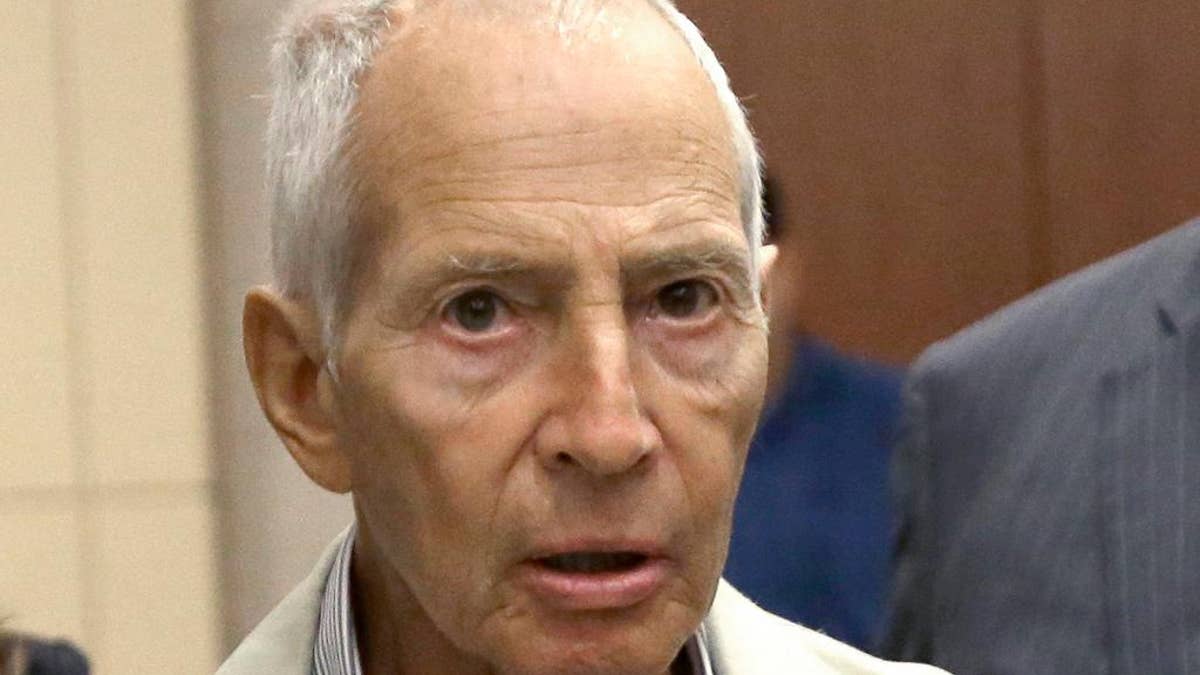Former judge claims Robert Durst is a 'prime suspect' for cat beheading
Former Galveston County Judge Susan Criss, who presided over Robert Durst's 2003 trial, said she knew it was the fallen New York real estate heir who left a severed cat near her property. Criss, now an attorney in private practice and free to talk about the multifaceted case, is participating in a new Investigation Discovery (ID) docuseries titled 'Robert Durst: An ID Murder Mystery.'
Former Galveston County Judge Susan Criss, who presided over Robert Durst’s 2003 trial, said she knew it was the fallen New York real estate heir who left a severed cat near her property.
Criss, now an attorney in private practice and free to talk about the multifaceted case, is participating in a new Investigation Discovery (ID) docuseries titled “Robert Durst: An ID Murder Mystery.”
ALLEGED SERIAL KILLER WAS 'LIKE THE DEVIL' IN COURT
The show delves into the story behind the infamous 75-year-old tycoon, who is reportedly worth $100 million. It features the suspicious 1982 disappearance of his wife Kathleen, the execution-style killing of his confidant Susan Berman in 2000, as well as the 2001 shocking death of his neighbor Morris Black.
The two-part limited series features interviews with Kathleen’s brother and Durst’s defense attorney, among others. Durst's attorneys did not immediately respond to Fox News' request for comment concerning the docuseries.
Twelve years after being acquitted of murder in 2003 for Black's murder, which he claimed was in self-defense, Durst was arrested in March 2015 just hours before the airing of HBO’s documentary “The Jinx: The Life and Deaths of Robert Durst.” The documentary examined the disappearance of his wife and the killings of Berman and Black and it created a sensation after Durst was heard during the finale muttering to himself on a live microphone: “You’re caught! What the hell did I do? Killed them all, of course.”
According to Criss, it was in 2006 that she allegedly encountered the beheaded cat near her driveway.
“It was the sidewalk that leads from my door to the curb,” Criss recalled to Fox News. “What was left, as close as you can possibly be to my property without touching my property, was a severed cat head with the front legs. It was in perfect, pristine condition. Not a drop of blood. No bodily fluid. Just clean. And the front legs were crossed. I ran into my house to make sure my dogs were OK. They were fine. But I just thought severed head, cut pristine — he was just the prime suspect.”
TACO BELL STRANGLER DETECTIVE SPEAKS OUT IN DOC

Judge Susan Criss, right, listens to assistant district attorney Joel Bennett during a pretrial hearing of murder defendant Robert Durst in Galveston, Texas, Sept. 22, 2003. — AP
Criss said she immediately thought of the crime scene photos from Durst’s trial, which she admitted terrified her.
The Los Angeles Times previously reported that in 2001, a 13-year-old boy fishing in Galveston Bay in Texas encountered his own grisly find — a human torso. Police divers later found the arms and legs in garbage bags. The body parts belonged to Black, 71.
According to the publication, Durst was living in Galveston under an assumed identity as a mute woman in an apartment that cost $300 a month. While he pleaded not guilty to murder, the trial revealed Durst chopped up Black’s remains.
“I saw how clean-cut the body parts wore,” said Criss. “They were not jagged. He cut them up with such surgical precision. It did not look like a first-time job. It was startling and frightening to see that.”
'SMILEY FACE KILLERS' GANG TO BLAME?

Morris Black is shown in an undated family photo. Black's torso and limbs were found in Galveston Bay. — Getty
The publication noted Durst’s legal team “laid out an elaborate argument of self-defense.”
“Morris Black died as a result of a life-and-death violent struggle over a gun that Morris Black had threatened Bob Durst with,” Houston attorney Richard DeGuerin told the jury. “As they struggled, the gun went off and shot Morris Black in the face.”
Mike Ramsey, another defense attorney on Durst’s team, claimed that Durst was then “thrown into a traumatized state, similar to an out-of-body experience, caused by a previously undiagnosed psychological disorder.”
And while prosecutors attempted to depict Durst as a methodical killer who cut up Black's body on his kitchen floor for two days before dumping them into the Galveston Bay, Durst said he downed a fifth of Jack Daniels and didn’t remember dismembering Black.
COCAINE GODMOTHER'S SON TELLS ALL

Private detectives with Blue Moon Investigations comb a portion of Galveston Bay in Galveston, Tex., in search of the head of Morris Black. (Getty)
Criss said that at first she thought Durst was insane. However, she later changed her mind.
“During the jury selection in the trial, he was acting crazy in court,” she claimed. “He was making animal sounds at the table. It was just bizarre. Talking to imaginary people who weren’t there. He brought a lot of attention to himself."
“There’s also the question of what kind of person would chop up another human being?” she added. “A lot of people would think you have to be crazy to do that. Because you just can’t relate to something that heinous.”
Criss claimed that once Durst learned there may have been tape-recorded phone conversations from jail where he may have reportedly said some incriminating statements he “dropped the act.”
CLICK HERE TO GET THE FOX NEWS APP

Robert Durst sits in a courtroom in Los Angeles on Dec. 21, 2016. — AP
But Criss said Durst’s team did whatever they could to humanize the mogul from the murderer.
“His behavior showed that he was working hard to make himself look human at the trial,” said Criss. “I think he did that so we could get over the fact that he committed such a heinous crime by cutting the body up. And I think every strategy is to humanize the defendant.
“He’s a small man to begin with, but they dressed him in oversized clothing to make him look smaller. And they lowered his seat to accentuate that. His legal team also called him Bob. You know, they did what they had to do to show the other side of the person, not just the person who committed the crime.”
The image Durst’s team created was that of a troubled millionaire suffering from mild autism who panicked after accidentally shooting the older man. The New York Times reported that on the witness stand, Durst said he fled New York for Galveston because he learned the Westchester County district attorney had reopened an investigation into Kathleen’s disappearance. Her body has never been found and she is presumed dead.

A file photo of Kathleen Durst, missing person, last seen on January 21, 1982, photo circa 1982. — Getty
After four delays of deliberation, the jury announced at a news conference after the verdict was read that while there were holes in Durst's story, the prosecution ultimately failed to prove that he deliberately murdered Black.
“There's no question that he killed [Black]” said Criss. “It was not self-defense, as he put it. I think a big part of it was that they were able to pick the jury that they wanted… And they were looking for who they could sell their story to.”
But Durst’s saga is far from over.
Durst faces trial Sept. 3 in Los Angeles Superior Court for Berman’s death.

New York City real estate heir Robert Durst leaves a Houston courtroom on Aug. 15, 2014. (AP)
Durst denied to the authorities any involvement in his wife's disappearance, but allegedly told Berman he had killed her. When New York authorities reopened the case in 2000 and planned to talk to Berman, prospectors said he ambushed Berman and shot her in the back of the head. Prosecutors added Black, who eventually figured out Durst’s identity was allegedly killed to prevent him from revealing his whereabouts.
“This is a never-ending story,” said Criss. “It’s a story of a wealthy person with so much privilege who could end up locked up. … But there was a lot of rejection in his life. And I think he couldn’t handle being told no. He just doesn’t want to be told no.”
“Robert Durst: An American Murder Mystery” airs January 21 at 9 p.m. on ID. The Associated Press contributed to this report.


























